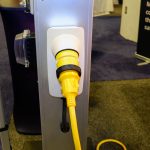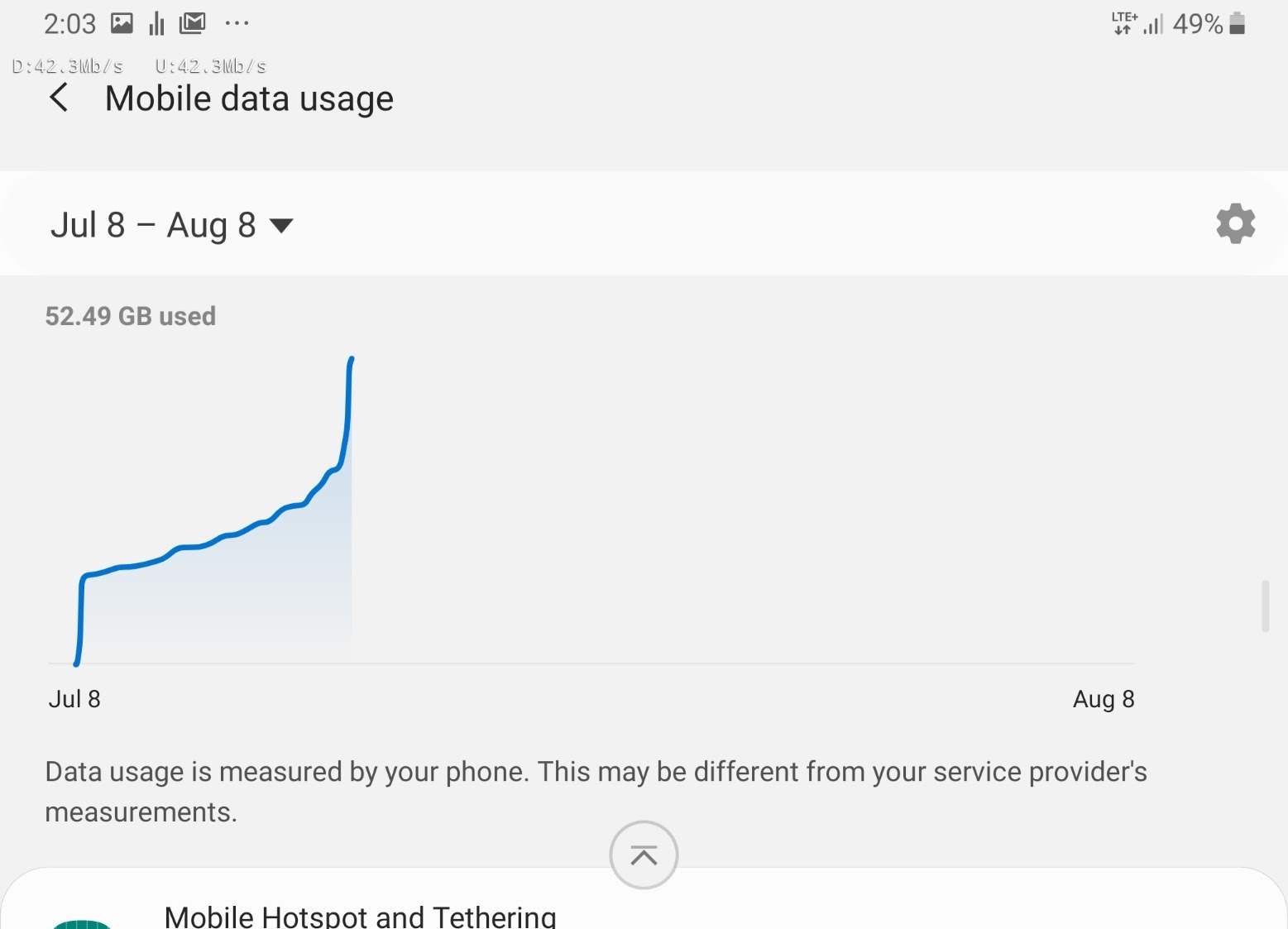AC Energy Monitoring with Emporia Energy

Have Another Day seems to consume nearly unlimited electricity. So much in fact that I began to doubt the accuracy of the simple kilowatt hour meters on the shore power pedestal at my marina. Month after month of $300 plus electrical bills will do that to you. Spot checking the power consumption with a clamp meter seemed to agree with the meter on the pedestal, but I wanted to know more which sent me searching for a tool to help me understand my boat’s electrical usage. It took me some time, but I eventually found a cost effective and easy solution.
Last summer was Have Another Day’s first in the warm weather and water of southwest Florida and that came with shock about the cost of cooling her. Have Another Day has two 50a 240v shore power services. I knew I’d need two separate systems and wanted to be able to manage multiple devices. I was also hoping to find an option that didn’t have a monthly fee. I went searching and pretty quickly came across Emporia Energy’s Vue Monitors.
An energy monitor watches how much current is flowing through the electrical service into your home — or in this case boat — and records it. This gives you the ability to see how much electricity you’ve consumed on a real or nearly real-time basis. Plus, many systems can monitor individual circuits so you know how much energy is used by a single load. There are also some energy monitors — like Sense — that use artificial intelligence to identify individual appliances and devices, like air-conditioning, cooking appliances, and others, by just monitoring the main electrical service. I’ve tried a couple AI systems in my home and found the AI pretty limited and inaccurate. I can only imagine it would be worse on a boat.
At $60 each on Amazon for the Vue or $100 with the 8 circuit expansion module and no ongoing subscription, the Vue met my cost effective requirements nicely. Installation on my boat was going to be a little different than what Emporia intended. The Vue is designed to be installed with the current transformers or CTs (the devices that wrap around the load carrying wiring and measure how much current is flowing through them) inside the main electrical panel and the Vue box either inside or near the panel.
Have Another Day’s main electrical panel is packed to the gills and I knew there was no way to install the CTs and modules there. Some crawling around the boat helped me identify cables leading from the aft shore-power inlet breakers as a good spot. Installation was fairly straightforward with the only real hitch being power supplies made to go through a punch-out on the side of a household electrical panel. Instead, I drilled 7/8″ holes into a piece of starboard and mounted the power supplies there and attached the modules just in front.

The home screen shows the most recent value for each circuit 
Electrical consumption can be shown several ways including as number of trees to offset your usage 
Shore Power 2 (air conditioning) aboard HAD displayed by day 
Shore power 2 displayed per second showing changes in near real time 
The hourly consumption history for shore power 2 (AC) follows the day’s temperature 
I’m not real sure how the “Lifetime Savings” is calculated
Emporia’s app has just a couple screens but it shows the information I’m after and does a nice job displaying data in time ranges from seconds to years. The seconds view updates every second which I’ve found useful to understand the impact of a specific load. The savings screen hasn’t proved useful, at least on the boat; it makes a few basic suggestions like convert to LED bulbs and get a smart thermostat but the lifetime savings doesn’t correlate to anything I understand.
The Vue connects to the boat’s WiFi network and then uploads data to Emporia’s servers. That means you’ll need a working internet connection to get the data and also means the data is available on your phone or tablet whether you’re on the boat or not. There’s not yet a web interface so accessing the data is limited to mobile apps for Android and iOS.
Individual appliance monitoring
Once you have a picture of the total energy consumption of your boat you may want to know more about individual loads’ power usage. There are old standbys to get this information like kill-a-watt plug in power meters but the proliferation of WiFi smart outlets gives another, cheaper option. Teckin’s Smart Plugs are available in a two pack for $22, or $11 each. That’s a pretty cheap way to get good overall usage information for an appliance. Teckin’s app lets you see usage on a daily, monthly, and lifetime basis. Emporia discusses a smart outlet on their site as well but it doesn’t seem to be available yet.
Storing data with InfluxDB and displaying with Grafana

I’ve installed SignalK Server and a suite of tools to collect, analyze, and display data on the boat. I’m storing data using InfluxDB and in turn displaying it with Grafana (more detail in the Signal K Server entry). It turns out an Emporia user has written a program to download the data from Emporia and insert it into InfluxDB. So, now I’m able to view energy consumption data right alongside all the other boat data.
Final thoughts
At $60 for an Emporia Energy Vue, I believe that nearly any boater on metered power would be able to save more in electricity than the device costs. I’ve discovered loads on Have Another Day that were using more power than I expected that could be turned off and other loads that turn out to have a much smaller impact than expected. The ability to display the data with Grafana is the icing on the already tasty cake for me. This has turned out to be a good addition to the boat that adds useful information affordably.

























I think that Southern Ben has found a good solution for a completely opposite shore power problem I’ve had up here in Maine. That was when Gizmo wintered at a marina that did not have metered pedestals and I objected to the flat power fee because I knew I’d only use a small amount. We eventually worked it out, but it would have been better if I could have offered them access to my own third party metering system and paid them fairly for what I used.
Better yet would be pedestal meters at all marinas, I think, because flat fees penalize energy efficient boats.
Southern Ben left out telling us how many kWh/day he’s using for his AirCon….;-)
It’s not pretty, but recent days with high temperatures in the mid 90s we’ve been averaging about 70 kWh/day for the last week for our air conditioning. At $0.12 / kWh that’s rouhgly $8.50 a day in AC. Ouch.
-Ben S.
Yikes, that is a lot of power! Sometimes I get jealous of the beautiful vistas and clearer water down there, and then I remember the heat and humidity. Now I will add the power bill to my list 🙂
The grass is always greener… I look at the islands you cruise and get a little jealous of that as well. Then I look at your weather in the summer and I get really jealous.
-Ben S.
Yeah, don’t look at the weather radar up here for today, or tomorrow, or I think Sunday…. 🙂
Wow. Even my house can’t burn up that much cooling energy. Probably because it’s well-insulated and uses a high-efficiency heat pump for heating and cooling. However, a key thing to look at is the efficiency of your AirCon. There have been big changes in recent years, and here are 16k BTU 24Vdc AirCon units that pull only around 800W. For instance, see this unit demo by our friends at Boat.RX: https://www.youtube.com/watch?v=C1zV7QMl3fY
Might pay for itself…
Hey Bruce, Phil and BoatRX are right here on Panbo:
https://panbo.com/dc-air-conditioning-comfort-on-the-water-no-generator-required/
I knew that! But then forgot….
Bruce,
I’ve often debated installing newer, variable capacity Air Conditioning. I’m confident it would save quite a bit in electricity, but the question is how much and how long would it take to see return on that investment.
You’re absolutely correct about insulation and overall energy efficient design. Our boat has effectively no insulation, very large windows, and lots of exposure to the sun. But another factor that can’t be overlooked is the water temperature. As I type this we’re floating in an 87 degree bath. With a solid fiberglass hull that heat makes it right through and that’s a lot of heat for the AC system to reject.
-Ben S.
Hey, Ben do you have tints on your windows? There are some (mostly) clear tints which are very effective at blocking infrared.